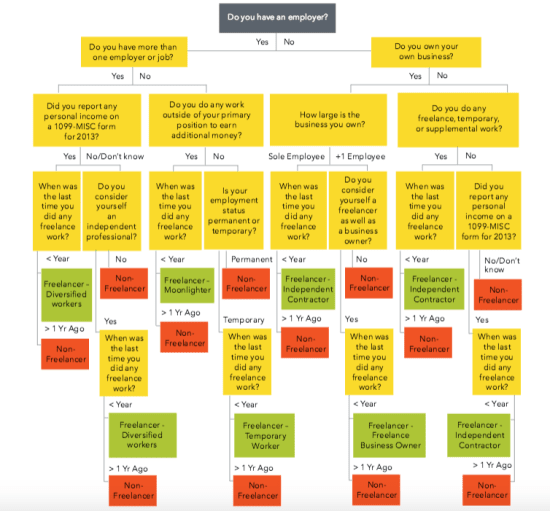Today’s American workforce is in a drastic state of change that while generating a significant amount of positive attention has a number of economists, thought leaders and politicians are concerned it may not be all that it is cracked up to be. According to a recent study published by Freelancers Union and Elance-oDesk, there are 53 million Americans in the U.S. workforce who have opted for the flexibility of freelancing rather than working the traditional full-time job for a steady paycheck. That is 34 percent of all American workers. “Workers can pursue more meaningfully independent lives. Businesses can access the exact right skills and people they need at the exact right time. A more nimble economy is potentially more innovative, more competitive, and better able to deal with the fluctuations of global markets.” According to the study, the explosion in the number of American freelancers is due to the expansion of the internet and social networking in connecting people with projects. It is well-known that taxes for freelancers can be complicated. However, there is plenty of support in this area that can be found online. Not surprisingly, the area of greatest growth amongst freelancers lies with Millennials. Many of these people have spent their entire working lives as freelancers. Thirty-eight percent of Millennials are freelancing compared with 32 percent of workers older than 35. What’s more, the Great Recession wiped out the notion that a traditional job was secure, the study says. “This growth demand and wage potential – not to mention the freedom that comes with freelancing – has many more Americans thinking about making the jump.” This segment of the U.S. workforce is adding $715 billion to the overall economy every year. For Americans thinking of joining the ranks of freelancers or those currently freelancing, some critics say, not so fast. While there are a number of enticing reasons to move into freelancing – earnings potential and scheduling freedom – there are other reasons to be cautious. “Freelance freedom and flexibility don’t come with traditional full-time benefits including health care and retirement savings,” CNBC reports. While earnings potential is high for freelancers, it is not guaranteed. With today’s tough economy, particularly income inequality, stagnant wages and underemployment, the prospect of not having that steady income and potentiality of no income for stretches of time could wreak havoc on the overall economic system. Time notes that a “ballooning freelance workforce means a permanent state of non-permanent wages, adding more uncertainty to an economic environment saddled by stuck income.” Maybe for many independent workers, they should consider using an invoice template more often to have a better read on their finances. Even Democratic presidential candidate Hilary Clinton expressed concern during a July speech in New York. “This on demand or so called ‘gig’ economy is creating exciting opportunities and unleashing innovation, but it’s also raising hard questions about workplace protections and what a good job will look like in the future.” As it has always done during any type of financial revolution, the workforce will evolve. That said, Millennials in particular may want to consider the following before opting to jump into the exciting but financially insecure waters of freelancing: Wages essentially topped out 40 years ago. In January 1973, $4.03-an-hour rate had the same buying power as $22.41 has today. That steady paycheck may not look so boring now. 
